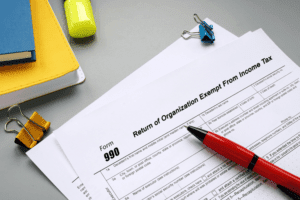
You analyze costs by period rather than by lot, which means that you collect the costs on a cost object over an extended period of time and analyze them in each period. Product Remote Bookkeeping Cost by Period enables periodic analysis of costs at the product level. Product cost by order is recommended in lot-based production environments.
Cost of Sales Vs Cost of Goods Sold
- Liabilities are normally things that are settled over time through the transfer of money, goods, or services.
- Under absorption costing, companies treat all manufacturing costs, including both fixed and variable manufacturing costs, as product costs.
- It enables you to collect costs at the product level independently of the production type.
- Therefore, variable costing is used instead to help management make product decisions.
Unsurprisingly, Apple is keen to maintain a steady stream of cobalt supplies to keep iPhone production rolling. COGS represents the actual costs incurred to produce and sell goods, so it should always be a positive value or zero. Learn how to use inventory data to forecast demand, avoid overstocking, and improve supplier performance for smarter, cost-efficient purchasing decisions. It is required in preparing reports for financial statements and stock valuation purposes. Calculate the inventoriable cost and value of the closing stock from the above data. Suvrat Joshi shares the importance of viewing trade-off decisions in product management more like a balance than a compromise.

3 Compliance with Accounting Standards

Now that we understand the basics and related factors of the cost of sales calculator, let us apply the theoretical knowledge to practical application through the examples below. You may start modelling during a period of high inflation, but you forecast that inflation will moderate in future periods; there will still be inflation, but at a lower rate. Or you may begin by modelling a period of low inflation and forecast that inflation will increase at some future date.
Fixed Costs
As problems go, ensuring that a company has sufficient inventory to support strong sales is a better one to have than needing to scale down inventory because business is lagging. Choose your accounting partner carefully to optimize your overhead costs and manage your accounting operations end-to-end correctly, smoothly, and compliantly. As with your dollar-amount-to-overhead ratio, your overhead-to-labor-cost is better when less. That means you put your labor force into optimum utilization at minimum overhead costs. Understanding overhead costs is a critical first step to managing overheads efficiently. By learning what overhead costs involve, you, as a business owner or executive manager, are prepared to calculate all your overhead costs professionally and compliantly.
These generally include selling and administrative expenses that the company incurs within the current accounting period and cannot capitalize on the balance sheet. Recognizable examples of period costs are office expenses, utilities, salaries, and advertising costs. The Total Period Cost Calculator is an essential tool for businesses looking to optimize their overhead expenses.

TranZact vs Oracle NetSuite: Effective Planning Tools for Your Business
Expert guide to accounting reserve account management & fund allocation strategies for businesses, optimizing financial efficiency & growth. They contain both fixed and variable components, making it difficult to predict their total cost. Period Costs directly affect a company’s profitability by reducing net income on the income statement. These costs are incurred whether production is high or low, and they are not directly tied to the production of goods. Period costs accounting is period costs a vital aspect of financial management for businesses. We shall take the total raw material and labor cost for raw material as purchase cost, which is 32,33,230 + 18,88,990, which equals 51,22,220.
- This misclassification can lead to errors in reporting the income statement, as it may distort the actual amount of expenses incurred during the period.
- If the manufactured products are not all sold, the income statement would not show the full expenses incurred during the period.
- While this movement can be beneficial for income tax purposes, the company or the firm will have low profit for its investors or shareholders.
- COGS is not addressed in any detail in generally accepted accounting principles (GAAP), but COGS is defined as only the cost of inventory items sold during a given period.
- These costs are incurred to create products that a company intends to sell to generate revenue.
The company reported 230,000 as of the opening stock, 450,000 as closing stock, and 10,50,000 as net fixed assets purchases. Typically, a financial model is concerned with micro-economic issues – it forecasts the financial outcomes for one business within the larger economy. While individual businesses cannot control inflation, they are subject to its effects.
- Fixed cost is treated as a time cost and charged to the Profit and Loss Account.
- Costs incurred to cover input materials required for production are not considered overhead costs.
- Until that point the inflation rate, and the index will be based on the first rate in the normal way.
- Typical applications of product cost by order are in order-related production or batch-based process manufacturing.
- This way you’ll have a better idea of the expenses and give a better idea of the net income of your company.
- Examples of period costs include rent, utilities, administrative salaries, advertising, and accounting and legal fees.
- A manufacturing company that purchases fabric as one of its raw materials, for example, may be able to get a volume discount on that fabric.
Artificial intelligence simplifies this process by automating cost tracking, identifying pricing anomalies, and forecasting future changes. If a company orders more raw materials from suppliers, it can likely negotiate better pricing, which reduces the cost of raw materials per unit produced (and COGS). Inventory turnover is an especially important piece of data for maximizing efficiency in the sale of perishable and other time-sensitive goods. An overabundance of cashmere sweaters, for instance, may lead to unsold inventory and lost profits, especially as seasons change and retailers restock accordingly. A high inventory turnover ratio, on the other hand, suggests strong sales.